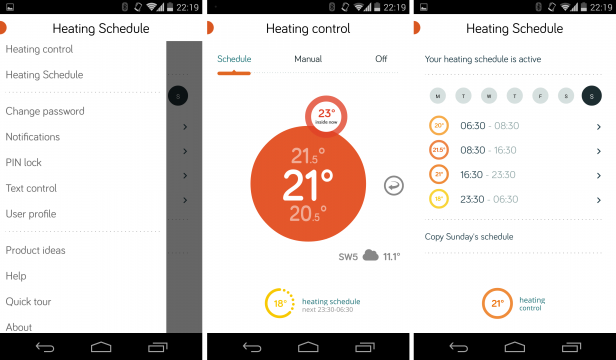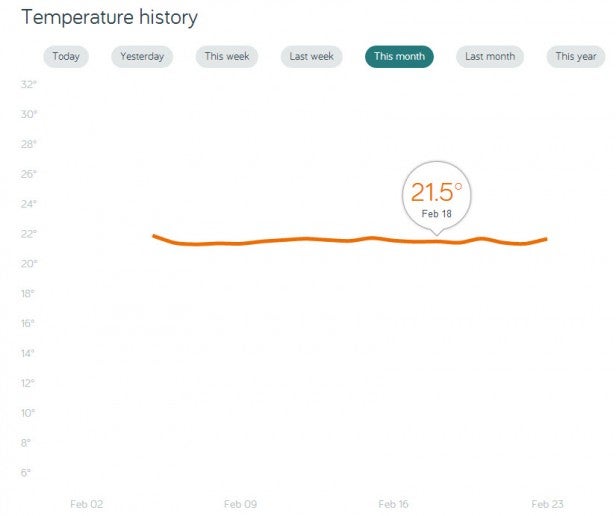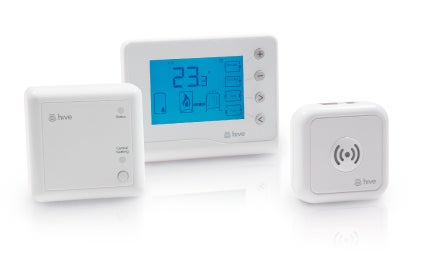British Gas Hive Active Heating Review - Performance, Value & Verdict Review
Performance, Value & Verdict
The first British Gas smart thermostat is polished, but lacks features.

Sections
- Page 1 British Gas Hive Active Heating Review
- Page 2 Performance, Value & Verdict Review
British Gas Hive Active Heating – Performance
We’ve had Hive installed for three weeks now and while it will take 6-12 months to get a full picture of the potential savings we can say we’re impressed with how it operates on a day-to-day basis.
Temperature maintenance seems more consistent than the Tado, which seemed to click the boiler on and off more often and it offers greater flexibility to micromanage your temperature settings right down to 15 minute intervals of every day.

That said, what we do miss is location detection. Those with rigid schedules will be less affected, but having to remember to manually adjust the temperature when you go out in the evening or away for the weekend is a task that was automated by the Tado and there were invariably times when we forgot with Hive. How much difference this makes to a bill over the course of a year remains to be seen, but location detection makes for a product you can install and forget instead of one you must manage any time you do something spontaneous.
Where Hive does hold a significant advantage, however, is hot water management. Our test environment uses a combination boiler that heats water on demand so there is little benefit, but for households with tanks being able to heat using off peak gas or making an adjustment to ensure there is hot water even in unexpected eventualities when you get home is extremely useful.
Related: What is IFTTT?
Less useful is Hive’s ability to show your ‘Temperature History’. This can be set from the last 24 hours to the last year and while it sounds good in theory the graph doesn’t lengthen, so days, weeks and months become so compressed you can’t dig up much detail. There’s a great feature in there somewhere but, much like the omission of integrating your British Gas tariff directly into Hive, it is one where the potential has yet to be realised.

Should I buy British Gas Hive Active Heating?
Our biggest surprise in using the Hive system is the lack of a unique selling point. Tado and Nest boast location detection while Honeywell’s imminent ‘evohome’ can divide each room into microclimate zones. Hive lacks either of these and offers no integration with British Gas bills.
As such Hive is essentially just a remote control thermostat rather than a smart device. You use it to adjust the temperature and set schedules and must make a habit of using it before nights out or trips away.
That said, what is there works well. The interface deserves praise and like its rivals it has the intelligence to not let your pipes burst if you switch off the heating in winter. The upside against Tado and Nest is the hot water management for those stuck with hot water tanks. For those with combination boilers, however, we don’t see a killer feature. This could change as British Gas develops Hive’s ecosystem over time, but right now basing your purchase on that is a leap of faith.
Verdict
The Hive Active Heating system is simple, well designed and easy to use but it isn’t particularly smart and you’re essentially buying a digital version of your thermostat to carry around. This is useful – particularly for users with hot water tanks – but rather than save you tasks it just means you do them remotely. What Hive does it does well, but right now that isn’t enough to recommend it outright.
Next, read our guide to Smart Thermostats in the UK

